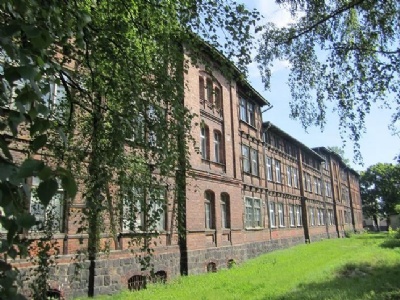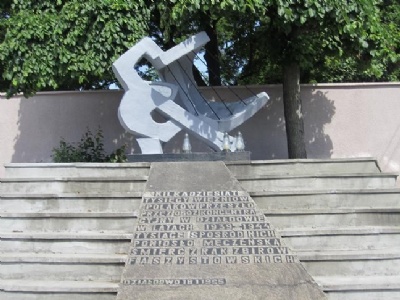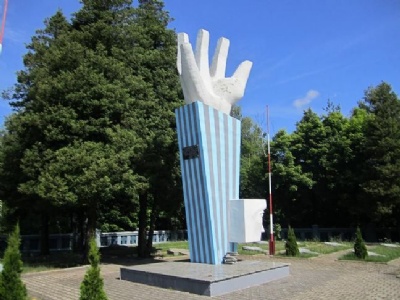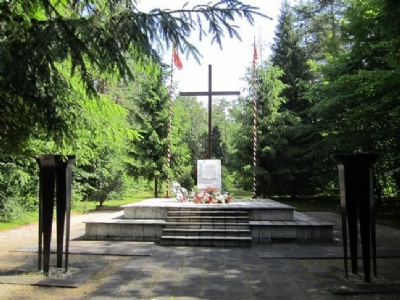Soldau
About 100 kilometres north of Warsaw lies a town called Dzialdowo (german Soldau) and there the Nazis in the winter of 1939/40 set up a camp for Polish political prisoners in former army barracks. The camp also became a transit camp for Poles to be transferred to the General Government. At the end of May and the beginning of June 1940, about 1,500 mentally ill patients were murdered in the camp. The murders were committed by a unit called Sonderkommando Lange, under the leadership of SS-Obersturmführer Herbert Lange. To murder the patients, a truck with a hermetic cargo compartment was used that the victims were lured into. Subsequently, containers of carbon monoxide gas were connected and pumped into the cargo hold and the victims died of carbon monoxide poisoning. From April 1940 Sonderkommando Lange was stationed in Soldau. About 13,000 of about 30,000 prisoners died in the camp and these were buried in two forest areas, one in Komorniki, five kilometers northeast of Soldau, and the other outside a small village called Bialuty, twenty kilometres south of Soldau. The Nazis evacuated the camp in January 1945 as the Soviet army approached.
Current status: Partly preserved/demolished with monument (2012).
Location: 53°14'15.28"N 20°10'15.18"E
Get there: Car.
Follow up in books: Friedlander, Henry: The Origins of Nazi Genocide – From euthanasia to the final solution (1995).




Herbert Lange impressed his superiors and was commissioned in the autumn of 1941 to establish in Chelmno the first Nazi stationary extermination camp. There, Lange copied only what he had done in Soldau, the difference was that the operations in Chelmno were significantly larger (Lange was killed in action during the battle of Berlin in 1945). It seems difficult to find information in English about what the camp looked like. The only thing I know for sure is that there is a dilapidated military barrack left. In the two wooded areas where the bodies were buried, there are well-kept monuments.